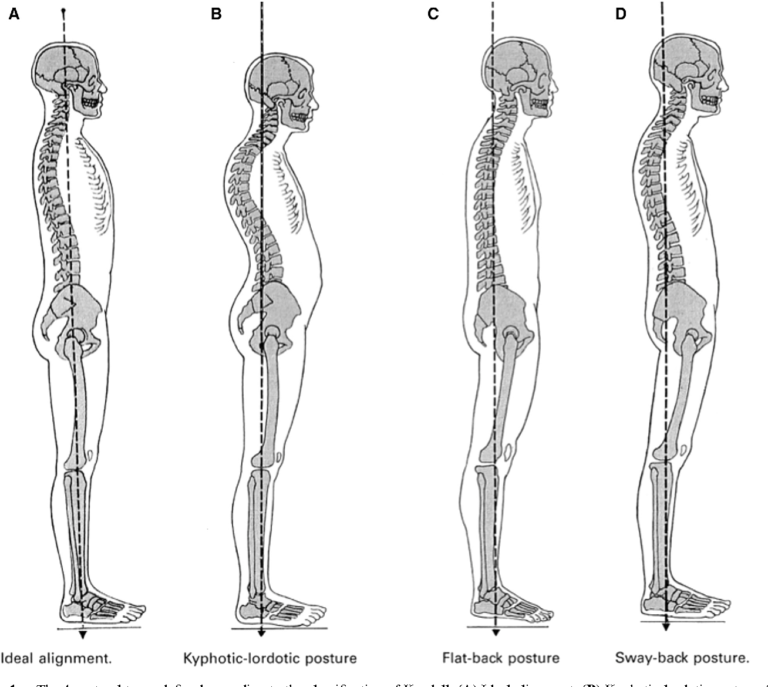Why Bother with Good Posture?
When our body segments are optimally aligned, force transmission through the tissues (i.e. bones, muscles, ligaments, fascia) occurs in a way that minimizes energy expenditure and reduces strain on joints and muscles. In other words maintaining good posture:
- Takes less effort (you’ll be less tired at the end of the day)
- Makes your muscle system more efficient (you’re stronger because your muscles can be activated in the ranges they are designed to work best in)
- Makes you less susceptible to pain and injury from chronically overloaded tissues.
Apart from speeding up degeneration in the spine, if we have poor posture when we sit or stand this often carries over to other activities such as walking, bending and running. These activities further increase the demands on our body by adding extra load or impact through our system. Learning to find the ideal posture for your body type and maintain it through larger ranges of movement or for longer periods of time is the essence of our
Standing Posture
Posture is the position in which we hold our bodies. We have “static” and “dynamic” postures:
- Static posture: How you hold yourself when you are not moving. For example, sitting, standing, laying down or sleeping.
- Dynamic posture: How you hold yourself when you are moving. For example, walking, running, lifting, bending and carrying.
Life is made up of a constant flow of static and dynamic postures, as are many exercises and activities we do. Yoga is made up of many static postures (with some focus on dynamic posture to move in and out of them), where as Pilates uses more continuous, dynamic movements.
What is good Posture?
Good posture is the correct alignment of body parts supported by the coordinated effort of various muscle groups to counteract gravity and other forces.

Image from Muscles: Testing and Function, with Posture and Pain, 5th edition. Kendall, McCreary et al (2005).
How to achieve good posture?
- Understand it
- Feel it
- Train your body to make it an automatic habit
- Improve your endurance in it
Improve your Move with better Posture
Often times, poor posture is an indication of a loss of movement variability and requires some further assessment on where to start. As physiotherapists, we become adept at identifying dysfunctions throughout the body, both in standing, and especially during movement to determine which symptoms and dysfunctions are compensatory and which are the true cause.
Below are a series of short practices that can help you to find and train your ideal posture.
Posture and Squat
Lateral Tilts and Bent Knee Fallout
Pelvic Tilts and Neutral Spine
Bridging
Bridging
Neutral spine is maybe a good start – it’s not bent forward or backwards, it’s in the middle. Deviations from neutral spine position, may be either temporary or permanent. The more stuck you get toward either end of the continuum, the more problems can occur. Often, we can improve your movement variability through exercise.
Once you can activate your core muscles and you can find your neutral spine, it’s time to challenge it more. Learning to maintain neutral while you load (i.e. bend, lift, squat and repeat) is one way to protect you from injury as you optimise the load through your muscles, bones and joints. Bridging is an example of an exercise where you can train this capacity. Bridging works the back of the pelvis, hips and thighs.
There are multiple variations to try. Here’s an example.

